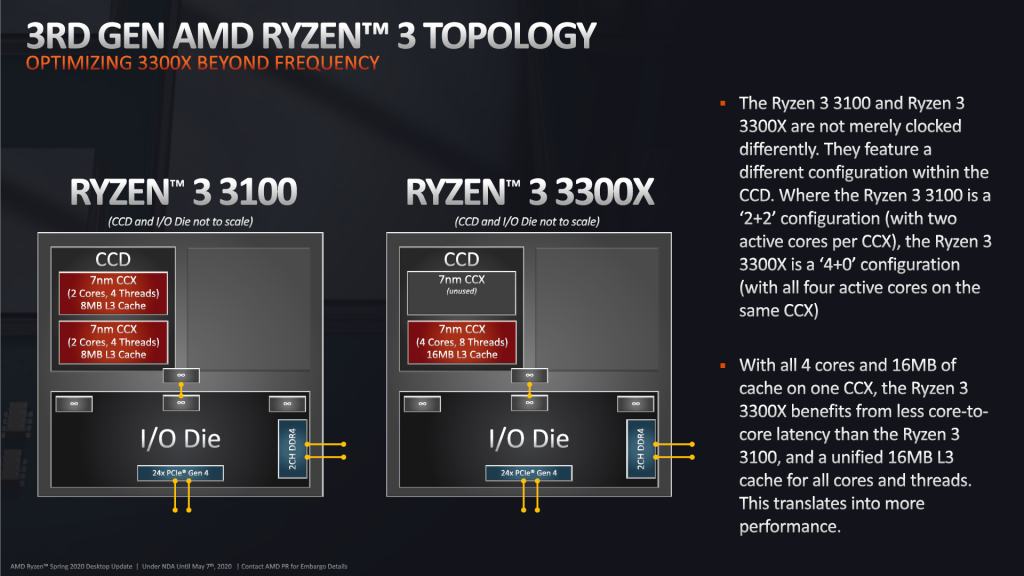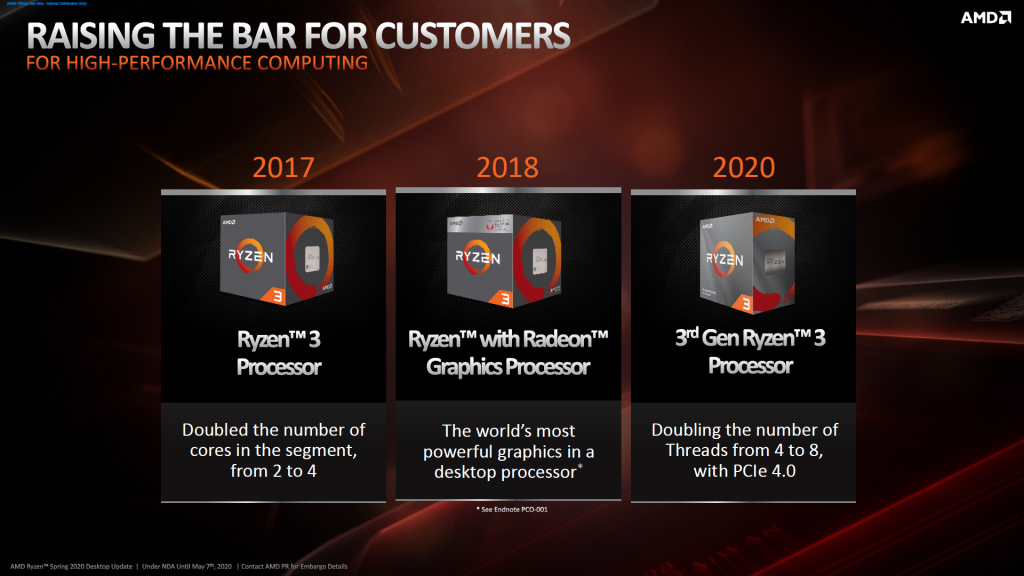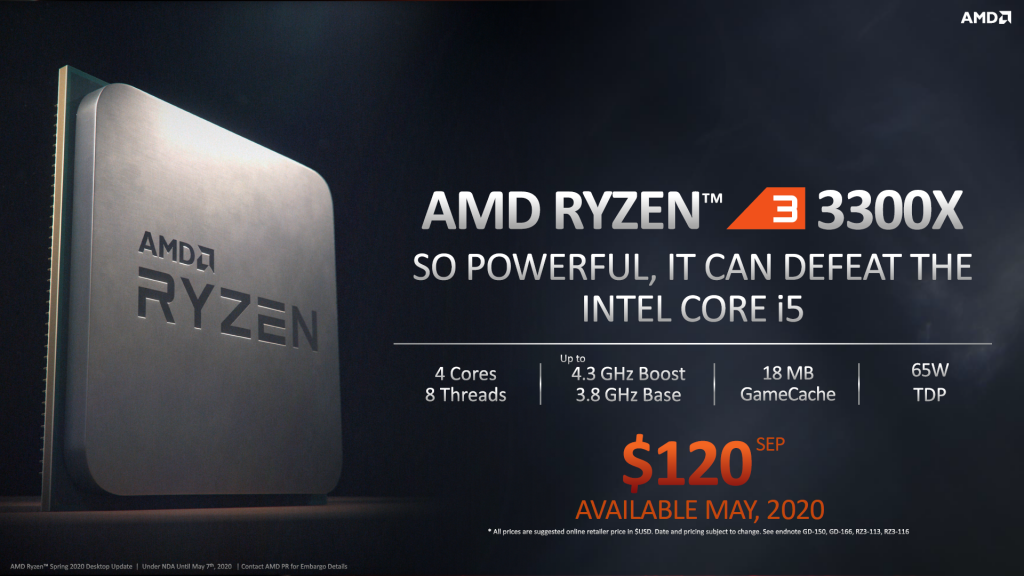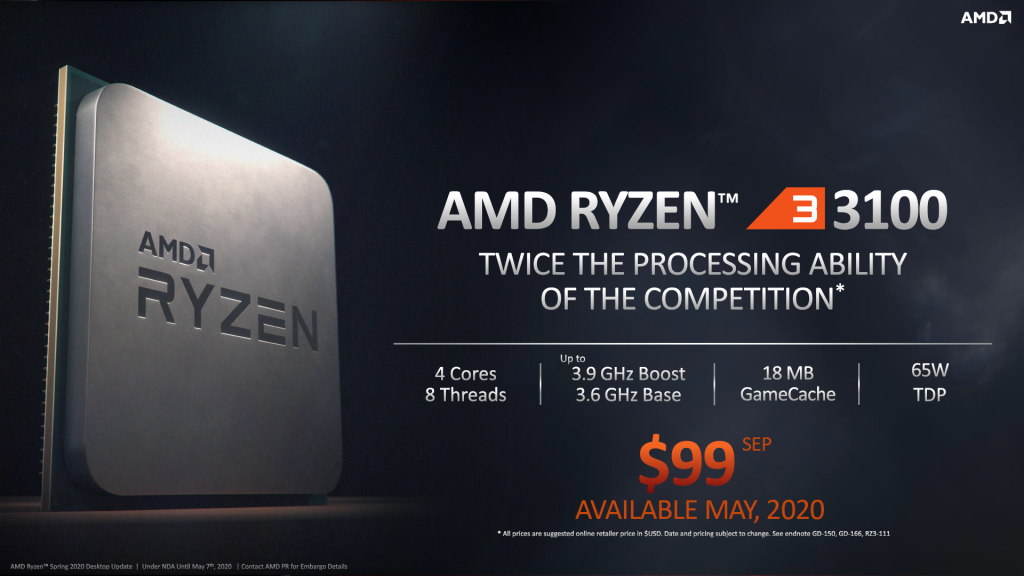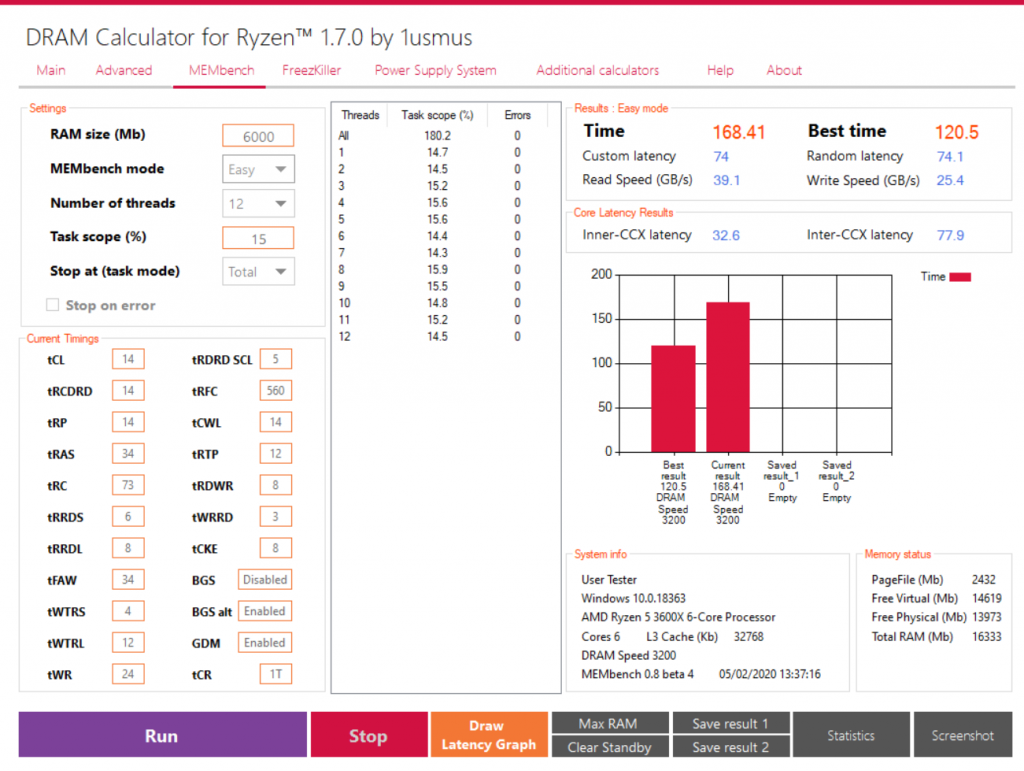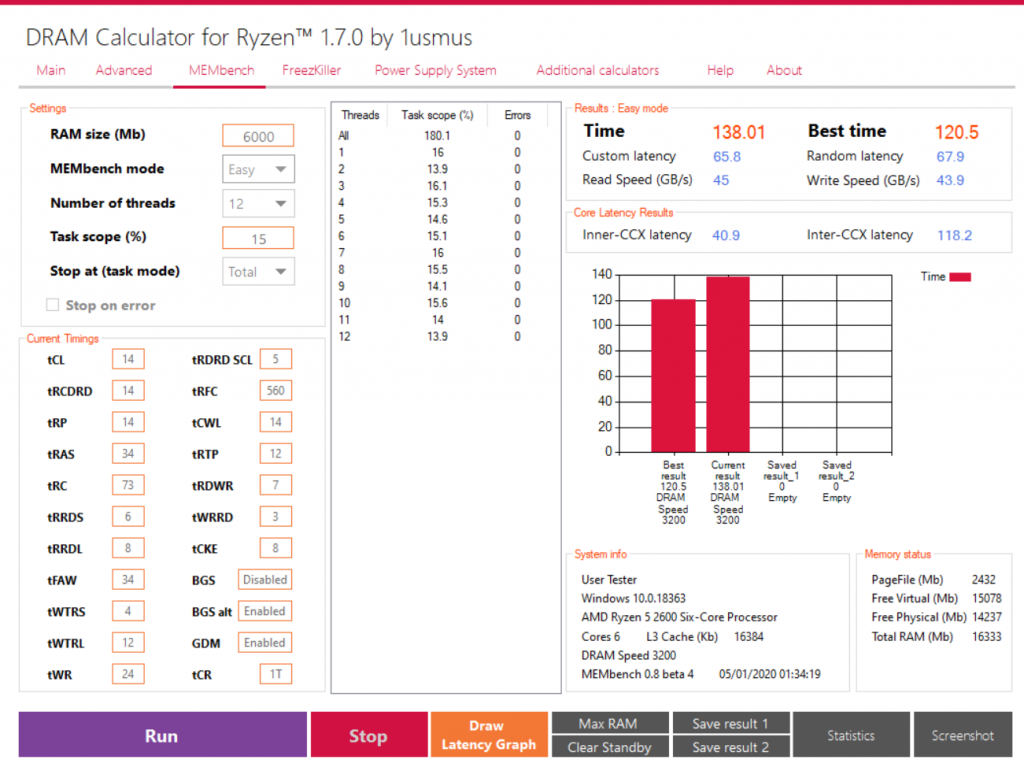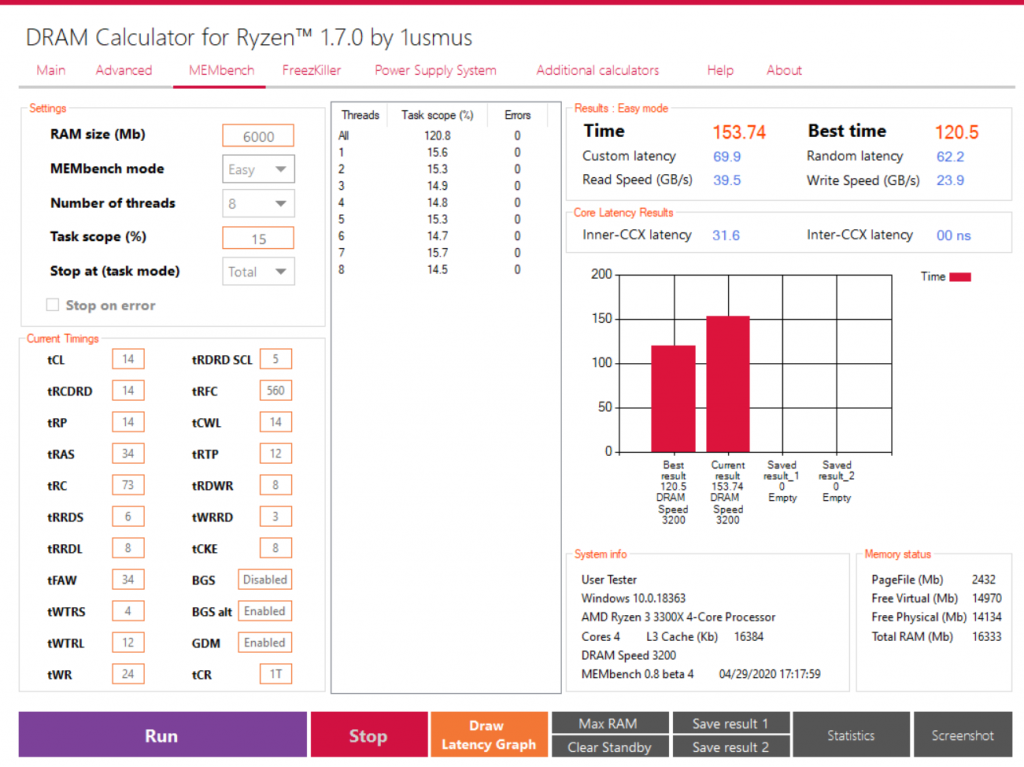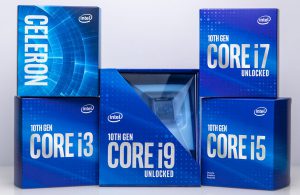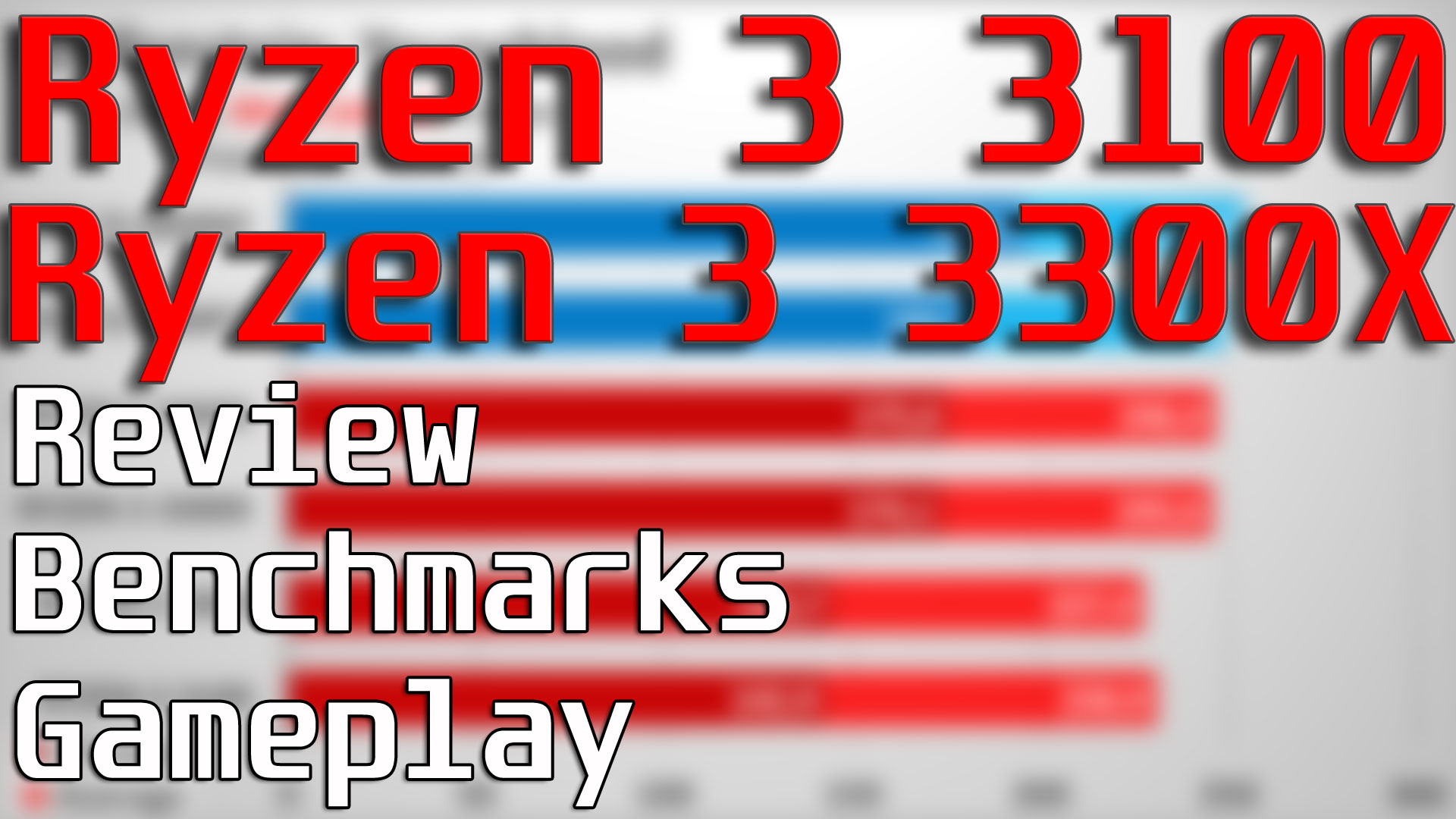
Ryzen 3 3100 and 3300X
But anyway, here comes the place of the heroes of this review – AMD announced Ryzen 3 3100 and Ryzen 3 3300X to provide some more affordable processors for the supposedly more affordable motherboards with B550 chipset. For that matter the processors cost $99 and $120 respectively, keeping the tradition of the models of this family to be at extremely attractive prices.
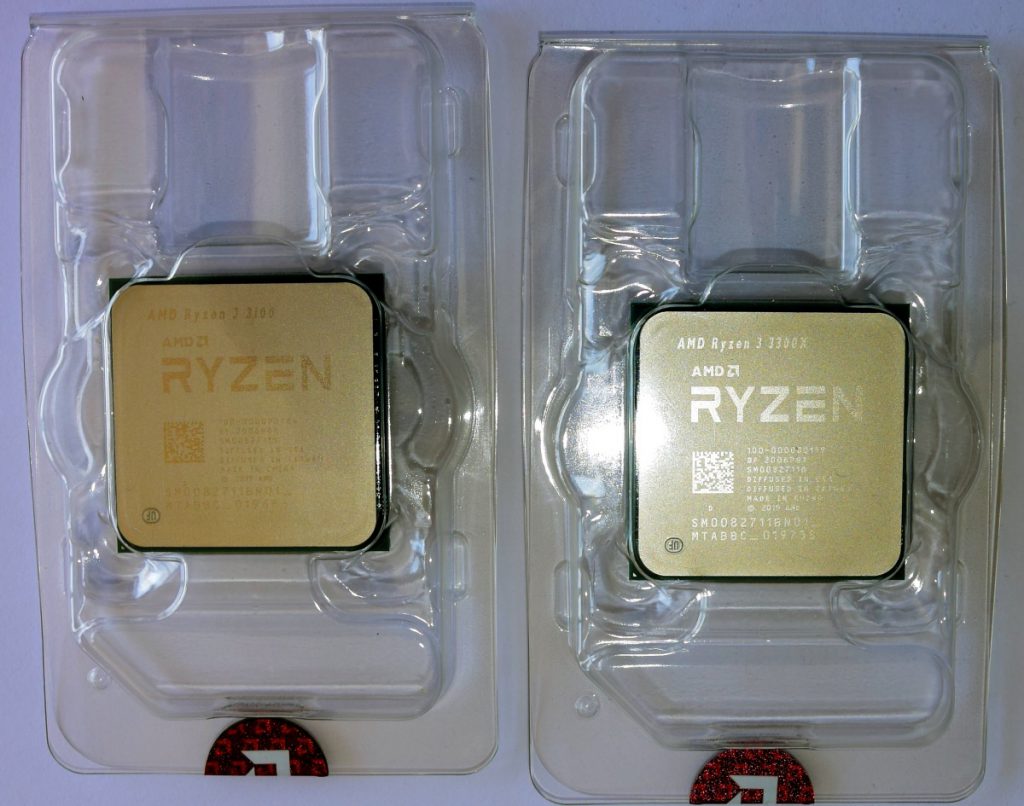
The two models are based on the well-known Zen 2 architecture, also using a single core chiplet and an I/O chiplet configuration. Of course, the CPU does not use the full configuration, as only 4 cores are active, in the good tradition of Ryzen 3 so far, but unlike previous models, this time SMT technology is left active, so you have a total of 8 threads. Pretty much what Intel offered for i7s until almost the end of 2017. Here we should note one of the big differences between the two models – Ryzen 3 3100 uses a relatively standard configuration of cores, as from each of the two CCX in the chip are disabled two cores, and in addition L3 cache is half blocked (8 MB on CCX, 16 MB in total). In this sense, the configuration can be seen as a direct successor to the Ryzen 3 1200 and 1300X, which were similarly configured.
In the Ryzen 3 3300X, however, one entire CCX is disabled, while the other is kept in its full configuration – 4 cores and 16 MB L3 cache. And that, as we demonstrated in the Ryzen 3 1200 AF review, has some pretty serious gaming advantages, but also in some other applications as well, such as archivers. In Zen 2, the latency in data exchange between the two CCXs is drastically reduced, but still remains much higher than that intra-CCX communication. In addition, the presence of 4 threads in CCX on the Ryzen 3 3100 and twice the size of the L3 cache, suggest that the effect of the difference in configuration between the 3300X and 3100 will not be as great as that in the Ryzen 3 1200 and 1200 “AF”, but it is certain that it will have an effect, so we will monitor the gaming results. As a side effect of the different configurations, however, it turns out that the Ryzen 3 3300X is significantly more difficult to cool. Probably the heat transfer density through the single CCX is quite high, which is complicated by the fact that the chiplet is located off-centre in the processor, so the heat exchange with the radiator above it may not be optimal.
Let’s look at the other chip specifications as well. First of all, both models have a 65 W TDP. The Ryzen 3 3100 has a base frequency of 3.6 GHz and a maximum turbo frequency of 3.9 GHz. The interesting thing here is that during load, I didn’t really see the processor drop below 3.9 GHz! The Ryzen 3 3300X does have a 3.8 GHz base frequency and 4.3 GHz maximum turbo frequency. But here, too, was not without surprise – the processor increased its frequency to 4.35 GHz, quite regularly so and not only in single-threaded load ?! For gaming, the frequencies ranged between 4.25 and 4.35 GHz, while for high multi-threaded loading, the frequencies were typically around 4.175-4.225 MHz.
But enough with the explanations, let’s move on to the tests.
